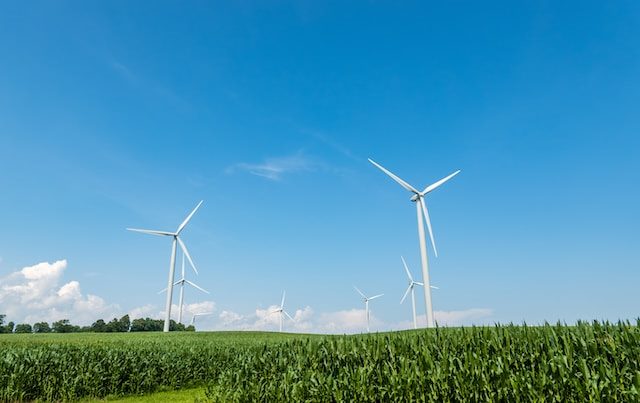
Welcome to our blog post on the important subject of the impact of renewable energy on wildlife conservation. As the world transitions towards cleaner and more sustainable energy sources, it is crucial to consider the potential consequences for wildlife. In this article, we will explore the various ways in which renewable energy can affect wildlife and discuss measures to mitigate these impacts.
1. Wind Energy
Wind energy is a popular form of renewable energy, but wind farms can have both positive and negative effects on wildlife. Let’s take a closer look:
1.1 Positive Impacts
Despite some challenges, wind energy can offer several benefits to wildlife:
- Creation of new habitats: Wind farms can provide new habitats for certain bird and bat species, as the turbines attract insects and small mammals.
- Reduced air pollution: By displacing fossil fuel power plants, wind energy helps to mitigate air pollution which can have indirect benefits for wildlife.
1.2 Negative Impacts
However, wind turbines can also pose risks to wildlife:
- Bird and bat collisions: Poorly sited wind farms can lead to bird and bat collisions with the turbine blades, causing fatalities.
- Habitat fragmentation: Wind farms can fragment habitats, affecting the movement and migration of wildlife.
To minimize the negative impacts of wind energy on wildlife, it is important to conduct thorough environmental assessments before constructing wind farms. This helps identify sensitive areas and implement measures to minimize harm.
2. Solar Energy
Solar energy is another key player in the renewable energy sector. Here’s how it affects wildlife:
2.1 Positive Impacts
Solar energy has some positive effects on wildlife conservation:
- Land preservation: Solar panels can be installed on rooftops or in already disturbed areas, minimizing the need for additional land use.
- Reduced water consumption: Unlike fossil fuel power plants, solar energy requires minimal water usage, conserving water resources for wildlife.
2.2 Negative Impacts
While solar energy has fewer negative impacts compared to other sources, certain concerns remain:
- Land conversion: Large-scale solar projects can lead to habitat loss and disrupt ecosystems if not properly planned.
- Glare and heat: Solar panels can create glare and heat islands, impacting local animals and plants.
To mitigate these negative impacts, developers should prioritize brownfield sites, utilize dual-use lands (such as solar farms combined with agricultural activities), and utilize innovative technologies to reduce glare and heat-related issues.
3. Hydropower
Hydropower is a renewable energy source that generates electricity from flowing water. Here’s how it affects wildlife conservation:
3.1 Positive Impacts
Hydropower offers some benefits for wildlife:
- Flood control: Well-designed hydropower projects can help regulate water flows, reducing the risk of floods and providing stable habitats for certain species.
- Improving water quality: Hydropower projects often include water treatment measures, leading to improved water quality and benefiting aquatic ecosystems.
3.2 Negative Impacts
However, hydropower can also have negative consequences:
- Habitat alteration: The construction of dams and reservoirs can alter ecosystems, leading to the loss of habitats and impacting fish migrations.
- Disruption of aquatic ecosystems: Changes in water flow and quality may affect fish populations and other aquatic organisms.
To minimize the negative impacts of hydropower on wildlife, it is important to prioritize sustainable hydropower projects that consider environmental factors, incorporate fish ladders or bypasses, and maintain a healthy balance between energy production and ecosystem conservation.
4. Bioenergy
Bioenergy refers to energy derived from organic matter, such as plants and agricultural waste. Let’s explore its impact on wildlife conservation:
4.1 Positive Impacts
Bioenergy offers potential benefits for wildlife conservation:
- Enhanced biodiversity: Biomass crops can provide habitats and food sources for various wildlife species.
- Reduced reliance on fossil fuels: By replacing fossil fuels with bioenergy, we can mitigate air pollution, indirectly benefiting wildlife.
4.2 Negative Impacts
However, there are some concerns regarding bioenergy production:
- Intensive agricultural practices: The cultivation of biomass crops may require extensive land use, potentially leading to deforestation and habitat destruction.
- Pesticide use: Intensive bioenergy crop cultivation may involve the use of pesticides that can negatively impact wildlife.
To ensure responsible bioenergy production, it is crucial to prioritize sustainable feedstocks, employ best agricultural practices, and promote the use of organic alternatives wherever possible.
Conclusion
Renewable energy sources play a vital role in combating climate change, but it is important to consider their potential impacts on wildlife conservation. Wind energy, solar energy, hydropower, and bioenergy each have their own benefits and challenges. By conducting thorough environmental assessments, prioritizing sustainable practices, and implementing appropriate mitigation measures, we can strike a balance between renewable energy development and the conservation of wildlife habitats.
Remember, the goal is not to discourage the use of renewable energy, but rather to ensure that it is implemented in a manner that considers and protects our valuable wildlife resources.
